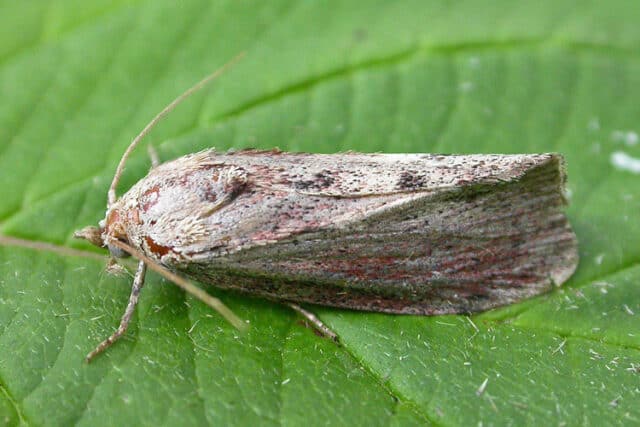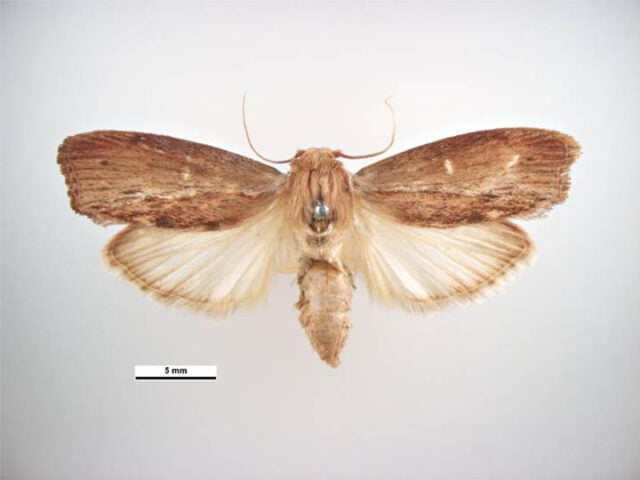Yes, leopard geckos can eat wax moths. For many reptile enthusiasts, determining the best diet for their pet is crucial. Wax moths, often seen as treats rather than staple feeders, can offer enrichment, exercise, and stimulation for leopard geckos.
However, it’s essential to understand the life stages of these moths, their nutritional content, and the potential risks and benefits they bring to your gecko’s diet.
Can Leopard Geckos Eat Wax Moths?
Absolutely, leopard geckos can and do eat wax moths. These small insects serve not only as a tasty treat for your pet but also introduce variety into their diet. While they aren’t meant to be the primary food source for leopard geckos, when offered occasionally, they can bring about some intriguing behaviors and benefits.
What are Wax Moths?

Wax moths are intriguing insects with a life cycle that’s as fascinating as their name suggests. Starting off as larvae, these creatures undergo a series of stages before reaching their adult form, known widely as moths.
The life stages of wax moths can be summarized as follows:
| Life Stage | Description |
|---|---|
| Eggs | The initial stage where development begins. |
| Larvae | Also known as wax worms, they’re soft-bodied and primarily consume honey, pollen, and wax. |
| Pupae | A transitional stage leading up to the adult moth. |
| Adult Moth | The final stage where the insect gains wings and becomes capable of reproduction. |
While larvae, often referred to as wax worms, are fatty and packed with nutrients, the adult moths are a different story. In comparison to their younger selves, moths have significantly lower fat and calcium content. This nutritional dip makes the adult forms less of a dietary powerhouse for leopard geckos.
Benefits of Feeding Wax Moths to Leopard Geckos
Feeding wax moths to leopard geckos is more than just offering a tasty snack; it brings with it a wealth of benefits. Let’s uncover what these benefits entail.
Enrichment, Exercise, and Stimulation:
Introducing wax moths to your gecko’s diet can lead to a delightful scene. Watching a leopard gecko hunt is witnessing a natural behavior in action. As they stalk, chase, and ultimately catch their fluttering prey, it becomes evident that this is more than just feeding. It’s an enriching experience that stimulates both their mind and body.
Honing Hunting Skills:
Leopard geckos are natural predators, and hunting moths can help them practice and perfect skills essential in the wild. This exercise isn’t merely about quenching hunger; it’s about practicing the art of stalking and capturing prey. Such activities provide essential mental and physical stimulation, ensuring your gecko remains active and engaged.
Nutritional Benefits:
While adult wax moths might not be as nutritionally dense as their larval counterparts, they still bring value to the table. They offer decent protein content, playing a role in muscle maintenance and growth for leopard geckos.
The nutritional comparison between the larval and adult stages of wax moths is noteworthy:
| Nutrient | Wax Worms (Larvae) | Wax Moths (Adults) |
|---|---|---|
| Protein | High | Moderate |
| Fat Content | Very High | Lower |
| Calcium | Moderate | Low |
As observed, wax worms are especially high in fat, making them a delicious but calorie-dense treat. This substantial fat content means that while they’re nutritionally appealing, they should be given in moderation.
Treats, Not Staples:
Given their nutritional profile and the enrichment they offer, wax moths are best introduced as occasional treats rather than staple feeders. Offering them intermittently ensures that leopard geckos enjoy the stimulation and variety they bring without compromising on a balanced diet. It’s the case with many other insects, including superworms. You can even give snails and slugs to leopard geckos, from time to time.
Is it Safe for Leopard Geckos to Eat Wax Moths?

While leopard geckos certainly enjoy the chase and consumption of wax moths, as caregivers, it’s vital to understand the potential risks associated with this dietary choice.
Potential Risks when Feeding Wax Moths to Leopard Geckos
Feeding wax moths to leopard geckos isn’t without its challenges. Despite the evident benefits, there are certain risks involved that pet owners must be wary of. One of the immediate dangers with wax moths, particularly the larger ones, is the potential for choking. Their size can make them harder to swallow, leading to impaction—a condition where undigested food remains stuck, blocking the digestive tract.
Beyond the physical risks, there’s also the concern about pathogens and toxins. Like any live food source, wax moths can sometimes carry harmful microorganisms. When ingested, these pathogens might introduce diseases or toxicity issues to your gecko.
Furthermore, consistently feeding moths as a primary food source can pave the way for nutritional imbalances. Their reduced calcium content, in contrast with their larval stage, can skew the diet’s balance, increasing the risk of metabolic bone disease. This condition is a result of calcium and phosphorus imbalances, which is detrimental to the gecko’s bone health.
Digestive Tract Blockage Risk
Leopard geckos, as enthusiastic predators, might sometimes bite off more than they can chew—literally. One of the potential hazards tied to feeding them wax moths is the risk of digestive tract blockage. While these moths are undoubtedly enticing prey, they’re structurally different from other common feeders like wax worms. The adult wax moths have notably harder and drier bodies. Additionally, their legs, being more rigid compared to the soft-bodied wax worms, can be problematic during digestion.
To circumvent this risk, size consideration is paramount. A simple rule of thumb is ensuring the wax moths you feed your gecko are smaller than the width between its eyes. Adhering to this size guideline minimizes the dangers of choking and the dreaded impaction.
Fat Content
Wax moths, particularly in their larval stage, are known for their rich fat content. While fat is an essential component of any diet, providing energy and aiding in the absorption of certain vitamins, it’s a double-edged sword when it comes to the diet of Leopard Geckos. Too much of it can lead to undesired weight gain, potentially paving the way for various health issues.
For Leopard Geckos, a diet too rich in fats can culminate in obesity, which in turn can lead to liver problems, joint issues, and a general decline in overall health. Therefore, it’s essential to monitor and control their fat intake. Just like in humans, balance is key. While the occasional wax moth can be a tasty treat, they shouldn’t dominate the diet.
What is the Best Way to Feed a Leopard Gecko Wax Moth Larvae?
Feeding your leopard gecko wax moth larvae can be both a nutritional supplement and an exciting chase game. However, like any treat, there’s a best way to feed them for optimal health benefits. Here’s a guideline to ensure your pet gets the most out of these wriggly meals:
Firstly, always ensure the wax moth larvae are the appropriate size for your gecko. A general rule of thumb is to pick larvae that are no larger than the space between the gecko’s eyes. This helps prevent choking or digestive issues.
When it comes to the actual feeding process, place the larvae into a dish to prevent them from burrowing into the substrate, which could make them harder to locate and might lead to ingestion of the substrate. Some gecko owners even opt for a “feeding box” separate from the main habitat to ensure a clean feeding environment.
In terms of frequency and portion size, wax moth larvae should be considered a treat rather than a primary food source. This means they should be given sparingly, perhaps once or twice a week, and only a few at a time. Overfeeding can lead to weight gain, especially given their high-fat content.
Lastly, while wax moth larvae can be a delightful snack, it’s crucial to maintain a balanced diet for your leopard gecko. This means incorporating a variety of insects like crickets, mealworms, and other appropriate feeders to ensure they receive all essential nutrients. Variety not only helps with nutritional balance but also keeps the gecko mentally stimulated and engaged.